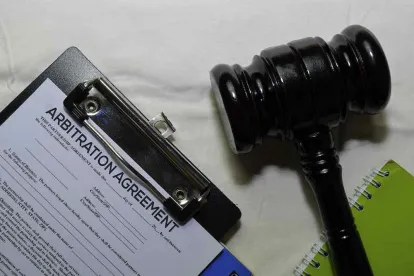The California Supreme Court has scheduled oral argument for May 9, 2023 in Adolph v. Uber Technologies, Inc., a closely watched case that concerns whether a Private Attorneys General Act (PAGA) plaintiff loses standing to pursue a representative claim when their individual PAGA claim is compelled to arbitration. This question was left open by the blockbuster decision in Viking River Cruises, Inc. v. Moriana, 142 S. Ct. 1906 (2022), in which the U.S. Supreme Court held that PAGA claims may be compelled to arbitration on an individual basis. Interpreting California law, the Court held that the plaintiff lacked standing to pursue a representative claim in court after being compelled to arbitration. However, as Justice Sotomayor pointed out, if the Court’s “understanding of state law is wrong, California courts . . . will have the last word.” Id. at 1925 (Sotomayor, J., concurring).
On July 20, 2022, a mere five weeks after Viking River Cruises, the California Supreme Court agreed to take up the question in Adolph. In the meantime, the issue also bubbled up through California Courts of Appeal, and six appellate courts unanimously disagreed with Viking River Cruises. Galarsa v. Dolgen Cal., LLC, 88 Cal. App. 5th 639 (2023); Piplack v. In-N-Out Burgers, 88 Cal. App. 5th 1281 (2023); Gregg v. Uber Techs., Inc., 2023 WL 2624590 (Cal. Ct. App. Mar. 24, 2023); Seifu v. Lyft Inc., 2023 WL 2705285 (Cal. Ct. App. Mar. 30, 2023); Nickson v. Shemran, Inc., 2023 WL 2820860 (Cal. Ct. App. Apr. 7, 2023); Quintero v. Dolgen Cal., LLC, 2023 WL 1878201 (Cal. Ct. App. Feb. 10, 2023).
In each of these cases, the court relied on the language of the PAGA statute, which confers standing on any “aggrieved employee,” defined as someone “who was employed by the alleged violator” and “against whom one or more of the alleged violations was committed.” Cal. Lab. Code § 2699(c). The appellate courts explained that whether a plaintiff’s individual PAGA claims have been compelled to arbitration is irrelevant to these criteria. See e.g., Galarsa, 88 Cal. App. 5th at 653. The courts also found support in Kim v. Reins Int’l Cal., Inc., 9 Cal. 5th 73 (2020), which held that a plaintiff does not lose standing to pursue a PAGA claim by settling non-PAGA claims for damages based on the same underlying violations. See e.g., Piplack, 88 Cal. App. 5th at 1291.
However, appellate courts have not yet considered whether their interpretation of the term “aggrieved employee” is consistent with other provisions of the statute. In at least three other provisions, PAGA uses the term “aggrieved employee” in a way that is arguably inconsistent with an interpretation that would include a plaintiff with no personal stake in the court action.
First, PAGA requires the plaintiff to give pre-suit notice to the employer, and for many types of alleged violations, a lawsuit may not commence at all if the employer “cures the alleged violation within 33 calendar days.” Cal. Lab. Code § 2699.3(c)(2)(A). The employer “cures” the violation if it “abates each violation,” such that “any aggrieved employee is made whole.” Id. § 2699(d) (emphasis added). The obvious purpose of this provision is to allow an employer to avoid a lawsuit by ceasing the alleged conduct and compensating the employees at issue in the proposed lawsuit. Interpreting the term “aggrieved employee” as broadly as the appellate courts did in the cases above arguably could require the employer to compensate employees who were never identified in the notice, thereby undermining the statute’s notice requirement.
Second, the maximum default penalty that may be imposed is based on the number of “aggrieved employee[s].” Cal. Lab. Code § 2699(f) (maximum of $100 “for each aggrieved employee per pay period for the initial violation” and $200 “for each aggrieved employee per pay period for each subsequent violation) (emphasis added). This provision makes sense only if “aggrieved employee” refers to an employee at issue in the lawsuit.
Third, PAGA also requires 25 percent of any penalties to be distributed to the “aggrieved employees.” Cal. Lab. Code § 2699(i). The obvious purpose of this provision is to allow the employees at issue in the court action to share in any recovery. This provision makes no sense if “aggrieved employee” is interpreted to include employees who have no personal stake in the lawsuit.
The California Supreme Court could nevertheless attempt to reconcile these apparent contradictions by embracing a fiction that the court action and the arbitration are part of the same lawsuit. See Piplack, 88 Cal. App. 5th at 1292 (“[P]laintiffs are pursuing a single PAGA action . . . albeit across two fora.”). In that case, however, rulings by the arbitrator on issues of law would presumably bind the State in the court action—a result the California Supreme Court may not intend.
None of these arguments can reliably predict what the California Supreme Court will do in Adolph. In interpreting the provision conferring standing on “aggrieved employees,” the Court could very well conclude, as did the six appellate courts to recently decide the issue, that a plaintiff does not lose standing to bring a non-individual PAGA claim when the individual PAGA claim is compelled to arbitration. However, the statute’s text provides an argument for reaching a different result.



 />i
/>i

